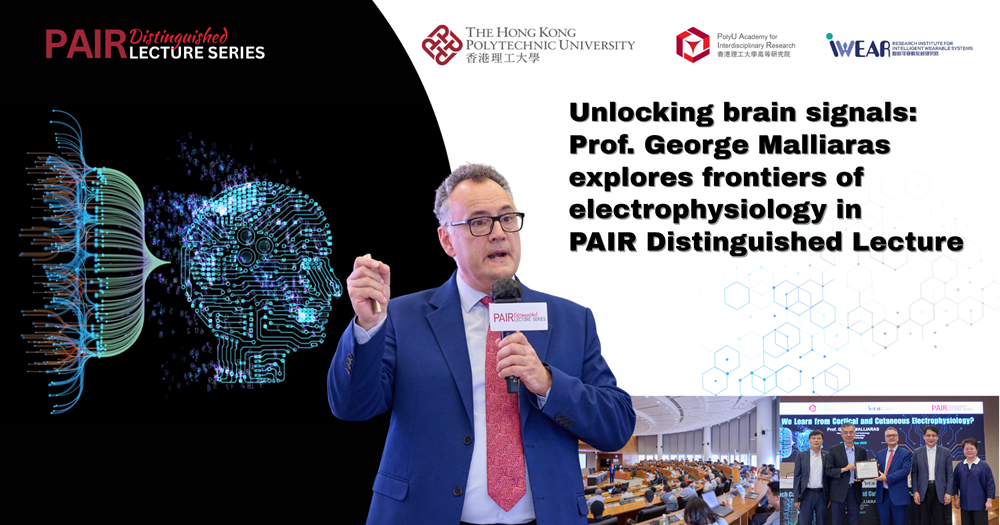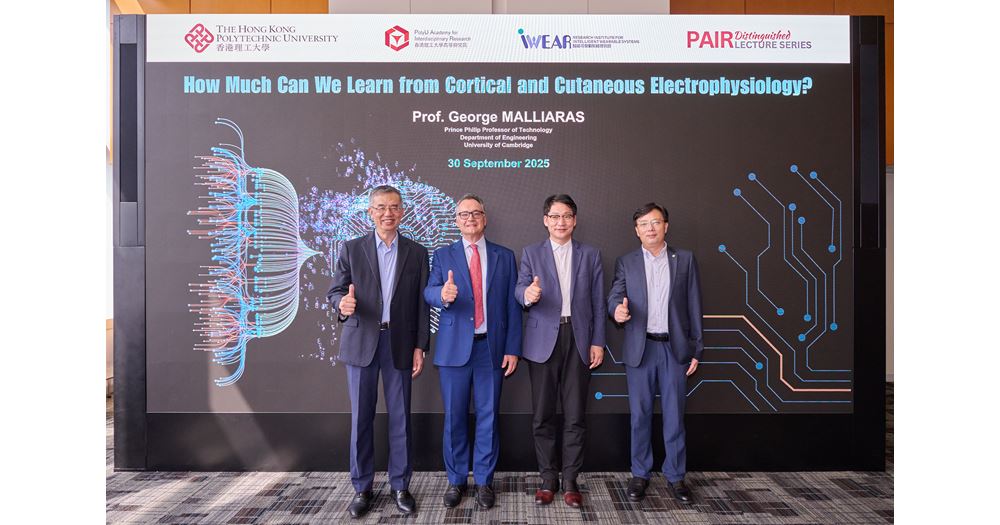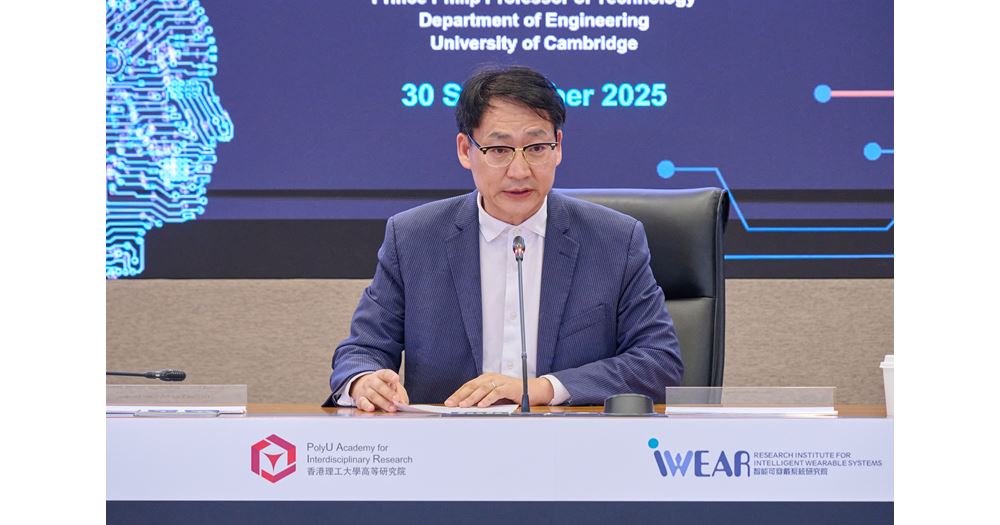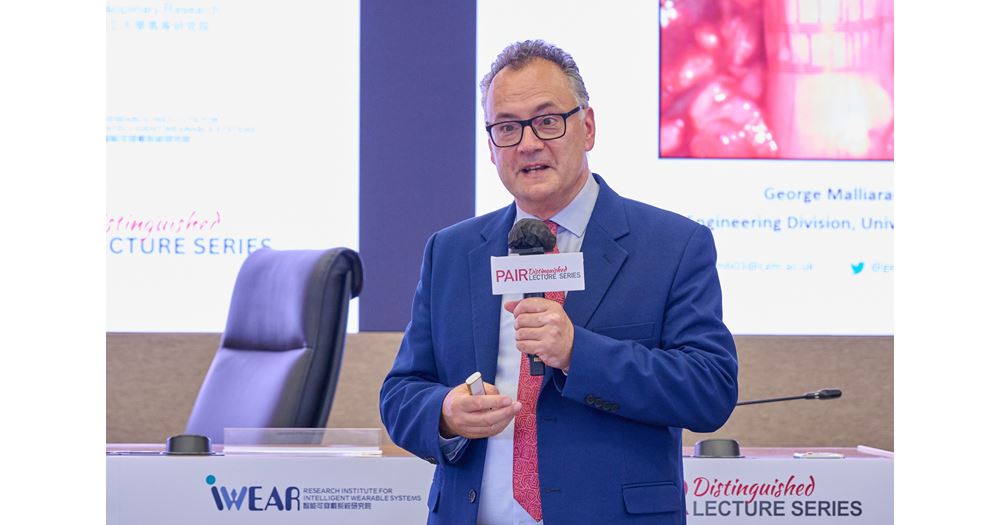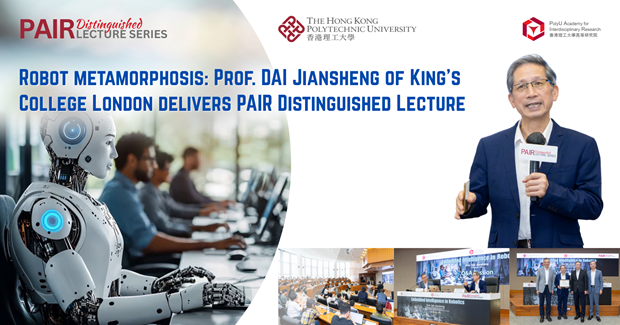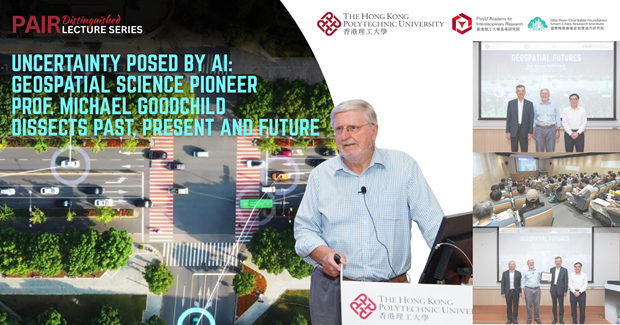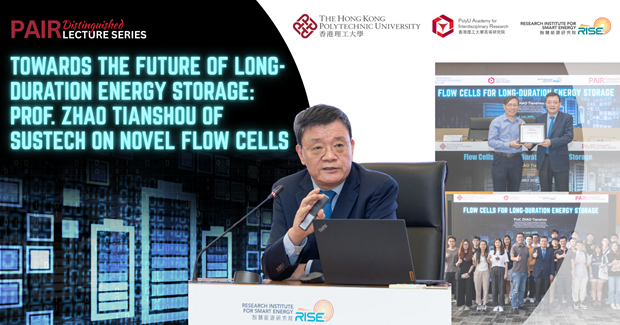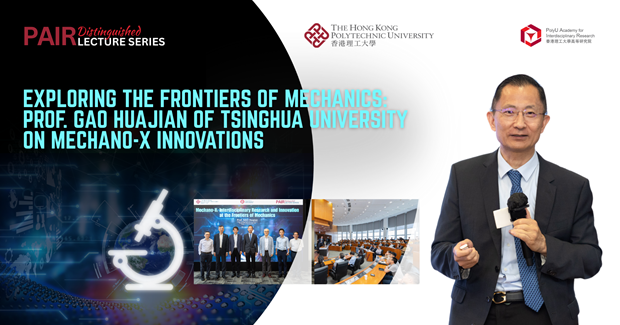Recent advances in cortical and cutaneous electrophysiological recordings are rapidly expanding our ability to decode neural information. On 30 September 2025, Prof. George MALLIARAS from University of Cambridge, United Kingdom, delivered a PAIR Distinguished Lecture titled “How Much Can We Learn from Cortical and Cutaneous Electrophysiology?” He shared insights into the recent studies that explore the boundaries of cortical and cutaneous electrophysiology. The lecture attracted nearly 100 in-person attendees, with more than 13,500 online viewers tuning in via various social media platforms.
At the outset of his talk, Prof. Malliaras provided a brief overview of modern bioelectronic medicine applications, ranging from cardiac pacemakers for arrythmias in the 1960s to the nerve stimulators for autoimmune diseases in the 2010s, and highlighted their limitations. He then introduced his team’s research achievements and potential applications in the field, including brain-computer interfaces, spinal cord cuffs, neurostimulator, cortical recording and stimulation, peripheral nerve cuffs, body surface potential mapping and e-textile.
In summary, Prof. Malliaras emphasised the inherent trade-off between invasiveness and resolution exists in electrophysiology. Thin-film electrodes enable circumferential recording and stimulation of the spinal cord, paving the way for a novel spinal cord injury bypass and allowing for the prediction of movement kinematics. Peripheral nerve cuffs facilitate sub-nerve recording and stimulation, offering new possibilities for organ function restoration. Body surface potential mapping provides a wealth of information and has been validated by studies involving dogs with valvular heart disease. These technologies together allow us to decode a broad range of signals, supporting applications in neuroprosthetics and health monitoring. Ongoing innovations in materials and interface engineering continue to enhance the amount and quality of information extracted from the brain and body.
The subsequent question-and-answer session was chaired by Prof. YAN Feng, Associate Director of Research Institute for Intelligent Wearable Systems (RI-IWEAR) and Chair Professor of Organic Electronics. Both in-person and online audiences engaged in fruitful exchanges and discussions with the two professors.
Please click here for an online review.
| Topics | PAIR Distinguished Lecture Series |
|---|---|
| Research Units | PolyU Academy for Interdisciplinary Research |

Prof. George MALLIARAS
Philip Professor of Technology
Department of Engineering
University of Cambridge
Prof. George MALLIARAS is the Prince Philip Professor of Technology at the University of Cambridge (UK). Before joining Cambridge, he was a faculty member at Cornell University (USA), and School of Mines of St. Etienne (France). George’s research on bioelectronics has been recognized with awards from the European Academy of Sciences, the Materials Research Society, the New York Academy of Sciences, the US National Science Foundation, and DuPont. He received an Honorary Doctorate from the University of Linköping (Sweden) and is Fellow of the Royal Society, the Materials Research Society, Academia Europaea and the European Academy of Sciences.
You may also like



